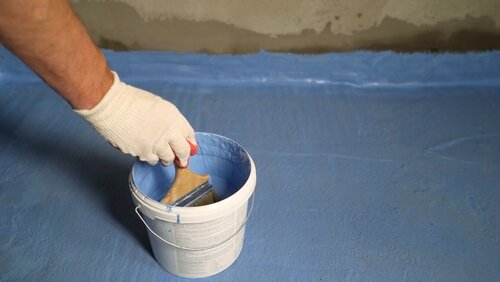Your bathroom would be useless without water. However, if the water reaches the wrong areas, it can cause significant damage. Waterproofing your bathroom is a necessity. Leaks, moisture, and mold can cause serious damage to countertops, walls and flooring. Untreated floors can expand, shift or become uneven if they are constantly damp. You can waterproof your bathroom to avoid costly repairs and hassles.
Here are a few tips on how to make your bathroom last longer.
1. Install waterproof material
Choose moisture-resistant tile materials such as metal, stone ceramic, porcelain, or plastic when remodeling. They are more resistant to mold and mildew than organic materials such as wood. They won’t rot or decay in the presence moisture. Before installing the final surface, use waterproof backer board when tiling around a tub or shower surround. For non-tiled surfaces, use a waterproof wallboard.
2. Waterproof your walls with tile
Ceramic and porcelain tiles are popular due to their resistance to moisture and water damage. They are not only used for shower and tub surrounds. Tile can be used for the backsplashes of your bathroom or to cover all wall surfaces in your bathroom. This will create a moisture-resistant barrier. There are also water-resistant laminates, vinyl, or engineered hardwood.
3. Fabricated surround panels
Fabricated shower or bathtub surrounds are seamless, except at the corners. Also, they are more affordable than custom tiles. It’s possible to install your surround yourself. Caulk all seams that you can find. Then, inspect the area annually to see if re-caulking is necessary.
4. Waterproof the floor
The only way for water to flow is down. It can cost up to $1,200 to fix flooring if you don’t protect the bathroom floor. Here are some tips on how to protect your new floor from water damage after you have cleaned and prepared the old one.
- Start at the far corner, and work your way around the edges. It should be applied about half a foot up the wall (and six feet in a shower recess). Wait for at least four hours until the primer dries.
- Use a caulking tool to fill the seams that separate the floor from the wall. Seal any cracks on the floor to stop moisture from entering. It takes 24 hours for the sealant to dry.
- Use masking tape to line the wall before applying waterproofing sealer.
- Fill the paint tray with bathroom waterproofing sealer. Use a sponge mop or paint roller to apply it up to the masking tap. From the back corner, start coating the floor and move towards the door.
- Wait another 24 hours to let it dry before applying a second layer of sealer. The masking tape can be removed.
- When waterproofing the foundation, use a membrane that will block moisture both above and below. It prevents mildew and mold from growing below the waterproof flooring when it is properly cut and placed.
5. Baseboards must be properly fitted
The baseboards in your bathroom are the connection between the walls and the floor. Caulk should be applied at both the top and bottom of them to stop water seeping in. The flexible thermoplastic vinyl or synthetic PVC mouldings are more resistant to water than wood baseboards. Ceramic tile trim moldings that are well-caulked will also be impervious to moisture.
6. Use an exhaust fan to remove moisture
The air in bathrooms is usually very moist. According to building codes, bathroom fans must exhaust at least 50 cubic foot per minute intermittently and 20 cubic foot per minute continuously. For a large room, you may need a more powerful fan. There are exhaust fans with infrared lights that can burn moisture.
7. Use a high-gloss paint
Bathroom wall paints with a matte or flat sheen can streak and stain. Glossier paints are more resistant to splashes and condensation. Satin, eggshell and semi-gloss are the most durable and easiest to use paints.
8. Practice consistent moisture management
Bathmats help to prevent water damage by absorbing moisture. Also, they protect from slippery conditions. Shower curtains that fit tightly will prevent water from reaching bathroom surfaces. As needed, re-paint or repair any gaps in the floor. When water spills, clean it up right away to prevent damage.
9. Keep your plumbing in good condition
Some homeowners are able to perform minor plumbing work themselves. But in general, DIY plumbing work is not recommended. You should hire a plumber to help you with your bathroom remodeling or waterproofing project. Plumbing professionals are trained to do the job and know the most recent building codes. The access panel for your shower or bathtub plumbing is also helpful. It allows the technician to reach your water supply without having to tear up your tiles and wallboards.
10. Contact edge bathrooms heating and air
Our team offers a variety of plumbing services in Boise and the surrounding areas. Our technicians are trained in the latest methods and can help prevent problems by repairing water damage. Our Protection Plan members receive same-day service and an annual plumbing tune-up. They also get a safety check. Schedule service online today if you need assistance with bathroom remodeling, waterproofing, or Bathroom Waterproofing in Melbourne.

